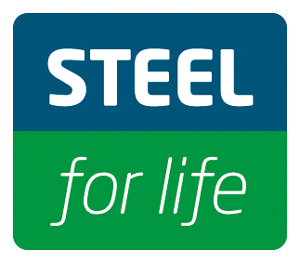Projects and Features
An introduction to steel manufacturing equipment
 Steel manufacturing equipment fulfills a vital role for steel contractors and steel stockholders alike.
Steel manufacturing equipment fulfills a vital role for steel contractors and steel stockholders alike.
Manufacturing equipment plays a key role in the structural steel fabrication process and has developed considerably over the past few decades.
In addition to steelwork contractors this equipment can now be found more frequently within steel stockholders’ premises as it provides them the opportunity to offer additional services such as cutting, drilling and scribing.
In this introductory article, we will look in more detail at manufacturing equipment and its role within the structural steel fabrication process.
What are some of the key functions carried out by manufacturing equipment?
Structural steel manufacturing equipment carries out a number of essential tasks required during the fabrication process including; blast cleaning, auto-painting, cutting and drilling.
Blast cleaning and auto-painting
For many steelwork contractors, sections and plates are blast cleaned prior to fabrication, although some choose to carry out the blast cleaning after the sections are cut to length. This surface preparation is an important part of the fabrication process, which is essential to provide a suitably clean finish for welding and subsequently also to produce a keyed surface ready to accept coatings. Shot or grit is fired at the steel surface which displaces dirt and mill scale, and also indents the steel creating a “rough” surface.
Manufacturing equipment with auto-painting functions can ensure prefabrication primers are applied immediately after blast cleaning. This immediate application maintains the reactive blast cleaned surface in a rust-free condition through the fabrication process until final painting can be undertaken.
Cutting and drilling
In the fabrication factory or steel service centre one of the first operations is to cut the sections to length and profile the plates to the desired size or shape. This can be done in a number of ways using a range of automated machinery; circular saws which are generally used for cutting to length, gas and flame cutting which can be used to cut components from steel plate; components can also be cut efficiently by plasma arc systems.
To support the efficiency of the steelwork fabrication process the use of drilling and punching equipment allows sections to be rapidly bolted together on site.
Multi-function machinery
Equipment manufacturers are increasingly offering multi-function machines which combine a number of the processes outlined above.
“FICEP invest heavily in developing automated and multi-function machinery for the steel sectors. Tasks such as scribing, milling and coping can be produced simultaneously, this benefit’s steelwork contractors by reducing labour and providing higher productivity using less equipment or manual processing,” says FICEP UK Managing Director Mark Jones.
Advancements in integration with 3D and simulation software
Equipment manufacturers have invested heavily in the development of 3D simulation software. One of the most notable developments which has impacted the efficiency and output of the sector is the introduction of CNC (Computer Numerical Control) solutions. Equipment manufacturers offer solutions which seamlessly utilise 3D modelling information from the production office and make it simple to transfer data in the form of assembly information directly to the equipment.
Moving a step back from the fabrication of structural steel, equipment manufacturers increasingly work closely with steelwork contractors using simulation software to look at the fabrication factory layout taking into account the differing needs of individual steelwork contractors.
“The structural steel industry is constantly evolving. At Peddinghaus, we invest within the research and development sector to produce cutting-edge technology and pioneer fabrication trends. Our goal is to provide partners with innovative solutions for long-term success.” says Peddinghaus Corporation Marketing Manager Lindy Casey.
The advancement and use of real time simulation software means layouts can be verified, tonnage capacities can be understood, bottlenecks identified through analysis of material flow and activities identified which could be automated. The aim of this analysis is to create a fabrication factory that optimises the factory layout to ensure maximum throughput and resource efficiency.
The Future
The next innovation in this sector is likely to be the full automation of all processes on the factory floor, utilising robots or cobots (collaborative robots) where humans and robots work together with direct interaction in a defined workspace to reduce material handling and welding.
 Sponsors: Manufacturing Equipment
Sponsors: Manufacturing Equipment
Gold: Ficep UK Ltd, Peddinghaus Corporation
Bronze: Kaltenbach Limited, Voortman Steel Machinery








